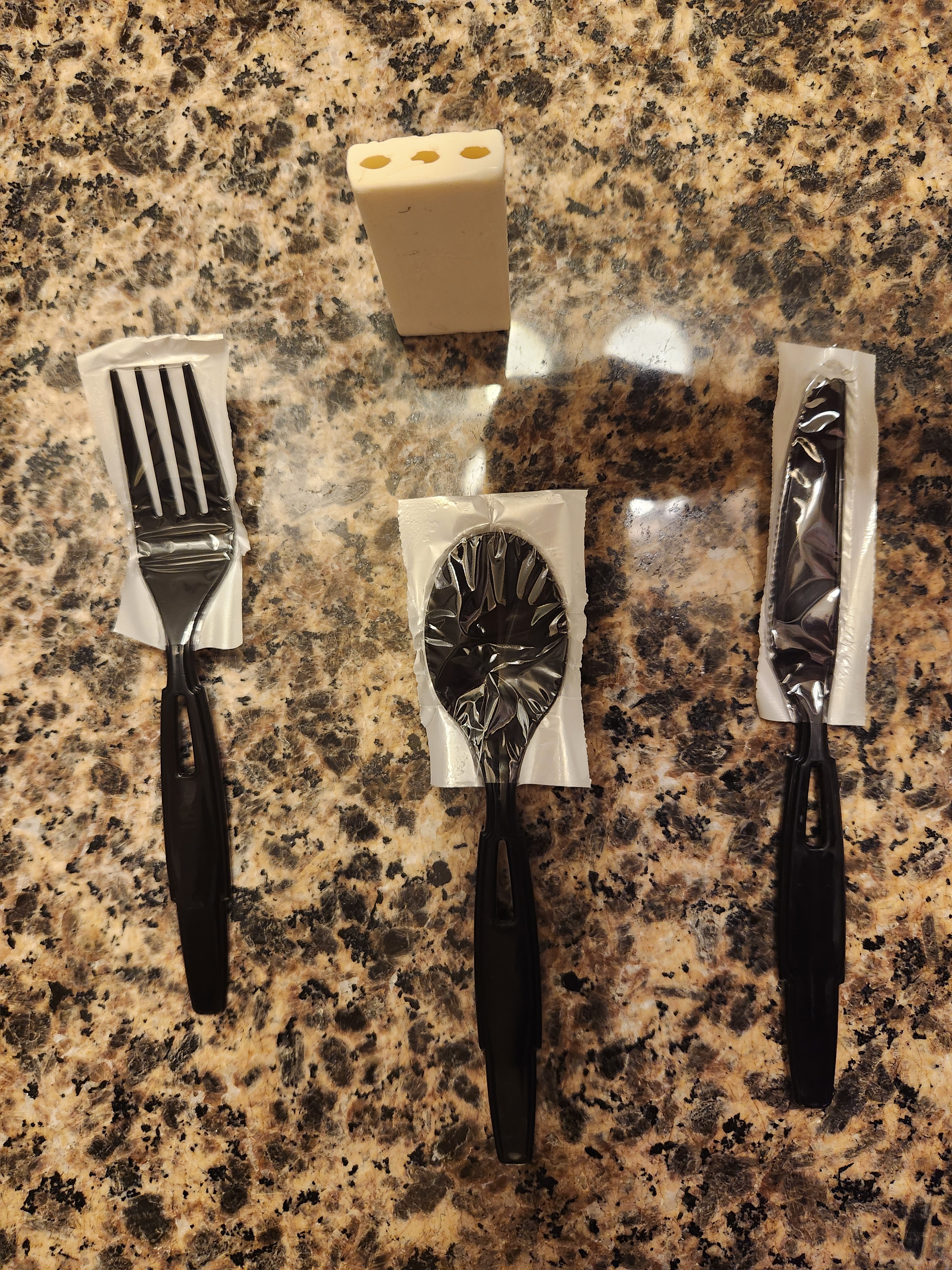Optimization
I’m traveling on business this week. I’m staying in a hotel, as you do when traveling for work. As I spend time in the hotel, I’ve noticed some very interesting things and learned from them. Just like I’ve learned things from my dryer. One of the I’ve learned is about different kinds of optimization. Take a look at this photo.

Look at that bar of soap. It’s got three holes all the way through it. It’s maybe half soap. That’s just the hotel being cheap, right?
Look at the silverware. They’ve all got big holes in the middle of the shaft . Only the ends of the silverware are covered. That’s just the hotel being cheap, right?
Wrong. That’s optimization. The question is, what are they optimizing for? Sure, cost is one of the things being optimized for. But it’s not the only thing. There are multiple other things. Like lifespan. Usefulness. Material used. Waste. And of course, customer satisfaction.
It’s not just any one of those things. Instead, it’s maximizing the collective impact of all those things. It’s got to be low cost, because the hotel goes through hundreds of thousands of them. If they’re too expensive, the price of the room goes up. If there’s too much material used then there’s more waste, which takes up more space and costs more to handle, which also drives up the cost of a room. On the other hand, if the silverware is made with too little material, it bends or breaks too easily and can’t be used.
The bar of soap needs to last for a few days, maybe a week. But that’s not a lot of soap. If it were solid, it would be too small to be used comfortably. The machine to make a bar of soap with holes in it is more complicated than one that makes a smaller solid bar. It’s more expensive to operate. But customer satisfaction is important.
The design of the silverware and the soap takes all that into account. They’re not the cheapest they could be. They’re not the best experience they could be. But they’re good enough. And they’re cheap enough. They’re not optimized for long term home use, and they’re not optimized for camping or restaurant use. They’re optimized to for short stays in a hotel.
Software is similar. It’s optimized for use in a specific context. Kubernetes is great if you need to orchestrate the deployment of hundreds of different workloads with multiple instances of each across thousands of computers. But if you’re hosting this static website then Kubernetes is a bad idea. Need to store a dozen rows for a database? A simple text file can work. If it’s a complicated schema then maybe JSON. You don’t need, or want, a Postgres or Cassandra database. On the other hand, of you need to store data related to millions of images with thousands being added every day, Postgres might be what you’re looking for.
And it’s not just in choice of technology. It applies to languages, architecture, and how you deploy things as well. These are all decisions we make on purpose.
Or at least we should be doing that. That’s what software engineering is really all about. Understanding not just the problem, but the context, the situation, and the environment, that you are solving the problem in. Then finding the combination of parameters that optimizes the value produced compared to the cost of production. I can’t tell you the right answer to all of those questions without a lot more context.
But I can tell you that the answer isn’t as simple as you think. And that the answer will change as the conditions change. So be prepared.
